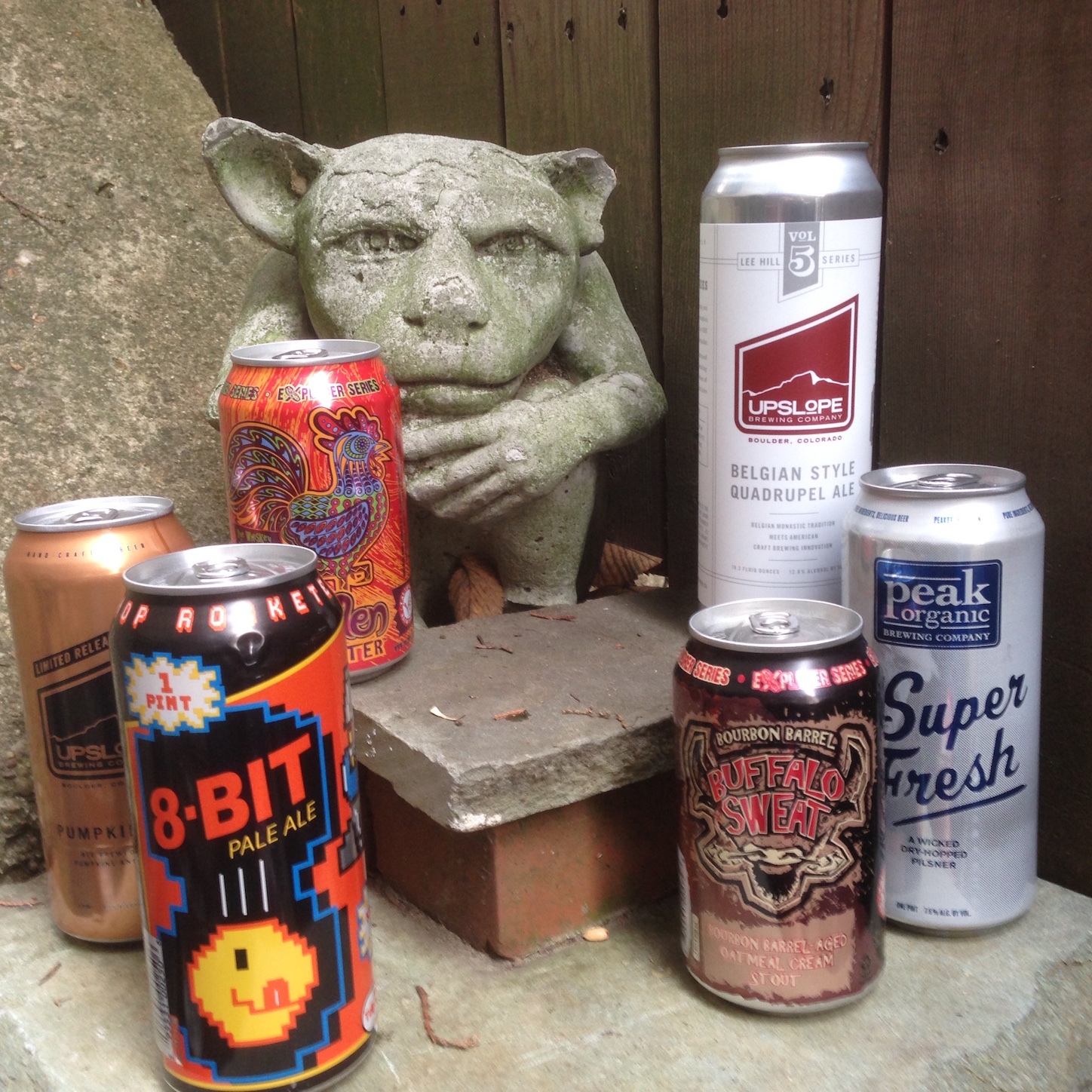 The Brewer’s Association’s Chief Economist, Bart Watson is a certified beer lover and stats geek – and his commentary on the industry is always insightful. He recently wrote about craft beer’s growing canning trend which led to us ask….
The Brewer’s Association’s Chief Economist, Bart Watson is a certified beer lover and stats geek – and his commentary on the industry is always insightful. He recently wrote about craft beer’s growing canning trend which led to us ask….
Is craft beer industry’s ongoing movement toward cans inevitable…and why is it picking up steam?
 When Oskar Blues’ Dale Katechis first started canning his beers back in 2002, many industry watchers were skeptical (including us). After all, cans had long been associated with Big Beer, college frat parties and frankly, lesser beer. Craft beer had separated itself from the mainstream by not only its quality but also by its artful presentation. And it was commonly felt that bottles were defining and an intrinsic part of the craft beer ethos.
When Oskar Blues’ Dale Katechis first started canning his beers back in 2002, many industry watchers were skeptical (including us). After all, cans had long been associated with Big Beer, college frat parties and frankly, lesser beer. Craft beer had separated itself from the mainstream by not only its quality but also by its artful presentation. And it was commonly felt that bottles were defining and an intrinsic part of the craft beer ethos.
Flash forward to now and so many of those assumptions have been proven wrong. And not only is craft beer in cans being increasingly accepted by the craft beer consumer – it’s fast becoming a norm.
Watson details several reasons why many craft breweries are switching to cans and why this trend is only going to grow…
1. Convenience – Canned craft beer is lighter and easier to transport. Plus it’s ideal for the kinds of activities that many of its fans embrace. But being lighter and more transportable isn’t just a boon for craft beer’s outdoor enthusiasts – it also means that cans are much cheaper for breweries to ship to retail. And in an industry where business margins can get incredibly tight – who doesn’t want that?
2. Freshness – Proponents of canning argue that cans provide a more effective light and oxygen barrier – and as a result that they preserve the beer’s freshness and integrity longer.
3. Sustainability – The craft beer community in general, aligns itself with both the ecological and sustainability movements. And as the lighter cans are easier to ship, they leave a much smaller carbon emissions footprint. Cans can also be recycled, and as Watson notes, can be back on store shelves in 60 days.
4. Improved Cans Technology – Innovations over the last couple of years have led to cans that just function better. Newly designed pouring lips now accentuate the beer’s aromatics. Different sizes abound and we’re even seeing more re-sealable cans now (faster please). Boston Beer’s Jim Koch, once a fierce opponent of canning, introduced his own newly designed “Sam Can” – and Sam Adam’s is now a leading participant in the movement.
5. Canning Is Becoming Smart Business – The canning industry is evolving too and creating all kinds of business options that both start-ups and established craft brewers are increasingly taking advantage of. Smaller breweries are lowering their capital expenditures by turning to a growing number of mobile canning operations. Canning lines which take up less square footage are lowering overhead), plus they are cheaper to manage than most bottling operations. And in addition to affording everyone lower shipping costs (see #1), cans take up less space, so they are cheaper to warehouse as well.
6. You – The consumer’s perception of craft beer in cans has changed profoundly over the last decade and what was once not cool is now commonplace. Exciting new breweries have grown passionate followings for their can-only products and accustomed a whole new generation to the righteousness of the canned concept at the same time. Cans now account for 10% of the total craft beer volume in 2014 and we expect that number to increase significantly in the coming year.
 American Craft Beer The Best Craft Beer, Breweries, Bars, Brewpubs, Beer Stores, And Restaurants Serving Serious Beer.
American Craft Beer The Best Craft Beer, Breweries, Bars, Brewpubs, Beer Stores, And Restaurants Serving Serious Beer.
